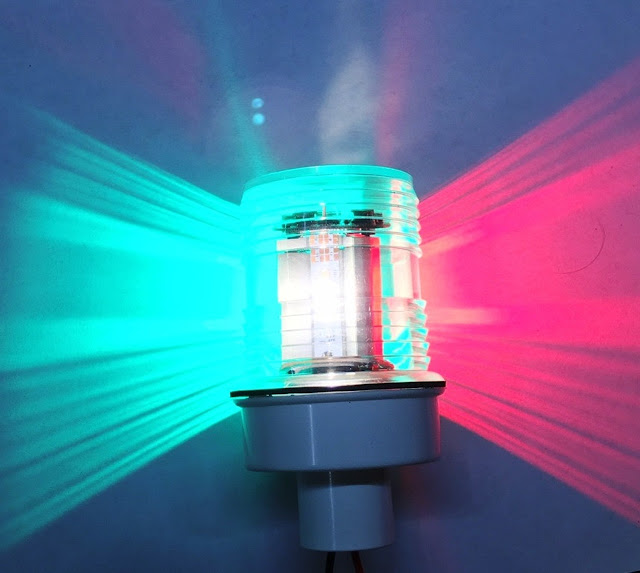First 260 chainplate layup schedule
A fallen headliner (a topic due its own post) gives us the opportunity to see the First 260s chainplate layup schedule where it attaches to the hull. You can see the additional layers of glass matting added to strengthen the area. The immediate area under the plate is most pronounced, clearly to take the extra shear load of the bolts. The larger areas surrounding it are designed to spread the load over a large area of the hull.
The areas can be seen plainly if you view the image full screen. As an aid, I drew the layers on on the same image below.
This method is common Finot/First practice for Beneteau hull mounted chainplates and has proven very strong. It is also used on Pogos.
I have however have images of Oceanus 311 that used an inferior method and pulled out. Its a shame Beneteau did this.
Chainplates simply bolted into the hull-deck flange. That big bolt to the left is the lifeline stanchion. The small loadplate with the two bolts is the cap shroud!
Load from the rigging causes the hull/deck joint to fail, endangering the entire rig. It's hard to say if this particular boat was improperly built up here at this critical point, or was subjected to extreme stress outside the design spec. In any case, I would never expect my chainplates to fail before my rigging did.
A clue to the mystery can be found be looking at the boat the O311 was based on, the First310, seen below. The first has traditional chainplates that run through the deck. Because of this, there was not a extra layup schedule on the hull, and they seem to have been OK with going with the clearly inferior joint mount. I personally would not own one of these 311s unless this area was reinforced.
Sail fast, sail safe!
The areas can be seen plainly if you view the image full screen. As an aid, I drew the layers on on the same image below.
This method is common Finot/First practice for Beneteau hull mounted chainplates and has proven very strong. It is also used on Pogos.
I have however have images of Oceanus 311 that used an inferior method and pulled out. Its a shame Beneteau did this.
Chainplates simply bolted into the hull-deck flange. That big bolt to the left is the lifeline stanchion. The small loadplate with the two bolts is the cap shroud!
Load from the rigging causes the hull/deck joint to fail, endangering the entire rig. It's hard to say if this particular boat was improperly built up here at this critical point, or was subjected to extreme stress outside the design spec. In any case, I would never expect my chainplates to fail before my rigging did.
A clue to the mystery can be found be looking at the boat the O311 was based on, the First310, seen below. The first has traditional chainplates that run through the deck. Because of this, there was not a extra layup schedule on the hull, and they seem to have been OK with going with the clearly inferior joint mount. I personally would not own one of these 311s unless this area was reinforced.
Sail fast, sail safe!








Comments
Post a Comment